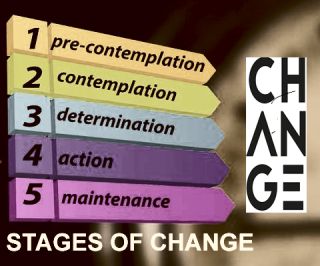Self-Help
Are You Ready to Change?
Are you willing to pay the price of change and make it happen?
Posted October 25, 2023 Reviewed by Ray Parker
Key points
- The first step toward genuine change and transformation requires sincere aspiration.
- People must be willing to pay the cost associated with any change.
- You can’t eliminate an unwanted behavior; you can only change it with another behavior.

Everybody wants to get better. Everyone wants to, but no one wants to change. This is the simple, hard truth that I have realized.
People may say they want to change, but their actions show the opposite. People are unwilling to pay the cost associated with the change. People are judged by their behaviors, not by their wants in life. They must walk their talk and translate their needs into actions.
People are going to change when they are ready to change. This is why I ask my clients,
- Are you ready to change now?
- Are you willing to pay the price of change?
Every time, these questions are followed by a long silence, awkward moments, confusion, and ambiguity.
The price of change, especially major change, is always the same. We must let go of attachments and our fears. And, in that, letting go, we can discover a completely different perspective on what it means to be alive.
Change requires two important tasks that most people find very challenging—transcending fear and attachment and being willing to embrace a new way of seeing.
The first step toward genuine change and transformation requires sincere aspiration. It necessitates understanding why we need to make the change and commitment to make the change while accepting the consequences. This process might mark the beginning of a completely different life, one that is free from attachment and fear.
To learn where you are in the process of change, here is some helpful information about the five stages of change:
1. Precontemplation Stage
At that stage, you can't see a problem or not be aware of it. It is common for people to be in denial at that point because they don't yet see (or can't admit) that there is a valid problem. External pressure from spouses, parents, friends, colleagues, and others often pinpoints the problem and adds pressure for the person to make changes and get help.
2. Contemplation Stage
You realize the problem, and you would like it to go away. Contemplators acknowledge that there is a problem and begin to think about solving it. People in that stage are challenged to understand the problem and may start thinking about some ways to manage it. They start wondering about what it would be like to change. The end of this stage is often manifested in anticipation, anxiety, and excitement.
3. Preparation Stage
You believe that you are ready to change, but you are still ambivalent and indecisive. Many people in that stage are planning to act yet are held back by some emotions, mainly anxiety and fear. As such, they are working on preparing themselves mentally and physically to take action toward change. People at that stage are more convinced that change is needed, and they prepare themselves to take action.
4. Action Stage
You are taking action and changing your behavior. This is the stage where people modify their behavior. They are doing what they have planned to do. This stage requires the commitment of time and energy, mainly mentally. Here, the change becomes noticeable to yourself and others.
5. Maintenance Stage
While your new behavior replaces the old one, this is not the end of the process. Change never ends with the first action. Fundamental change necessitates a strong commitment to maintenance—sustaining the change. There might be a relapse or a slip at that stage, but commitment and supportive elements would help repair the situation and keep you on track.
It is not uncommon that changers go through the above cycle multiple times. It is important to note that long-term success is not linear. It is more like a spiral process. Each relapse or slip is an opportunity to learn, grow, and restart rather than getting sucked back into old behaviors.
Tips for Change:
- Commit yourself to becoming your best self, and at the same time, be specific and clear about what to do.
- You can’t eliminate a bad behavior; you can only change it with another behavior.
- Know the why you make the change—the benefits of making the change.
- Be willing to pay the price of change.
- Meet yourself where you are and slowly progress.
- Start small and increase gradually. Break down your goal into smaller and smaller steps until it becomes manageable.
- Have self-compassion and be gentle with yourself. Remember that shaming yourself destroys your willpower.
- Commitment, consistency, and patience are fundamentals of the change process.
- If you slip, challenge yourself to do better next time.
- When you relapse, forgive yourself, but remember the lessons you learn from it.
- Bring a positive and best-effort attitude.
- Focus on commitment to the process, not your results.
Change is possible. Are you ready?
References
Prochaska, J., & Norcross, J. (2001). Stages of change. Psychotherapy: Theory, Research, Practice, Training.




